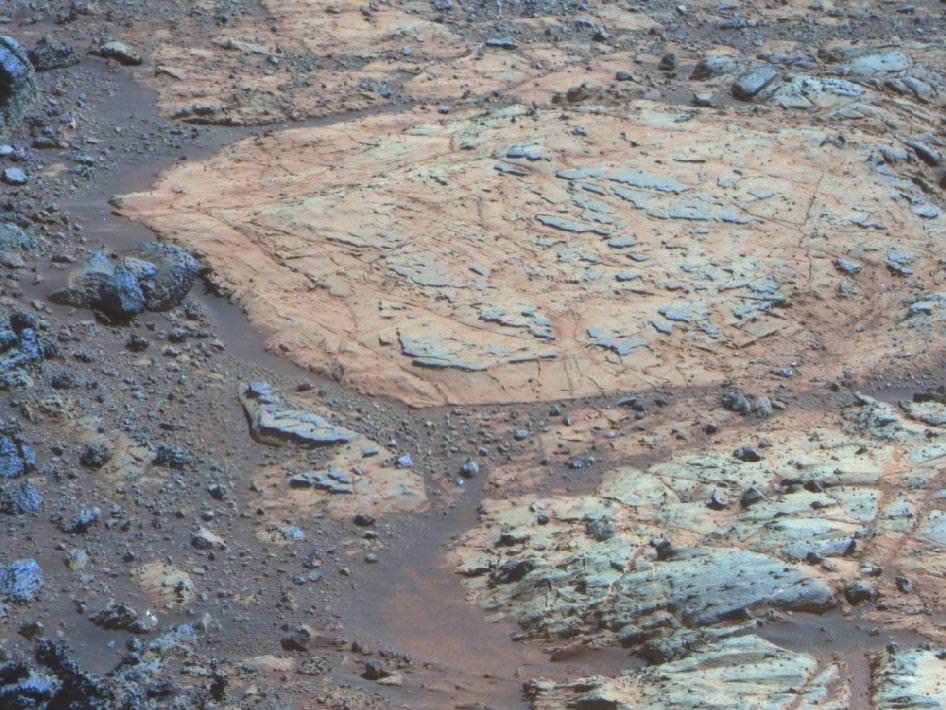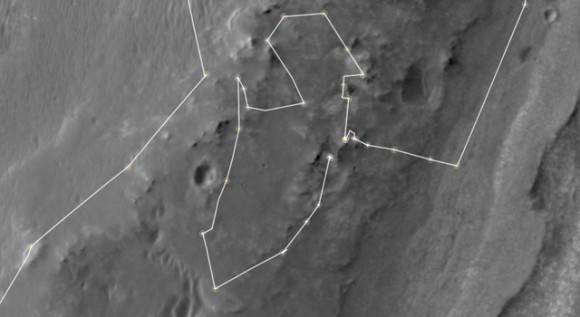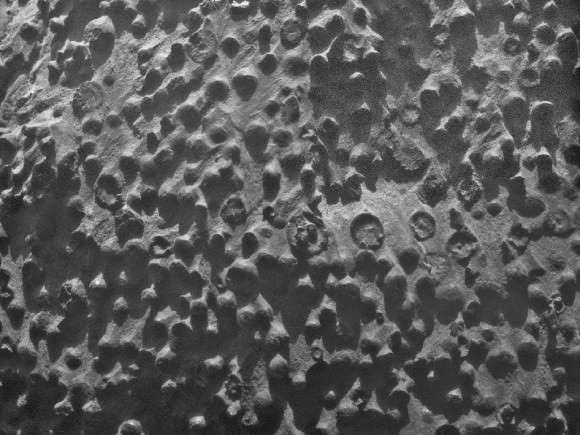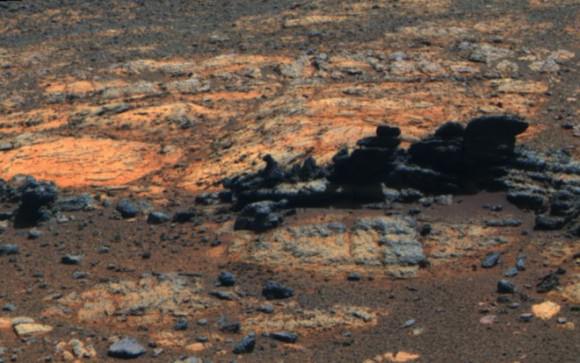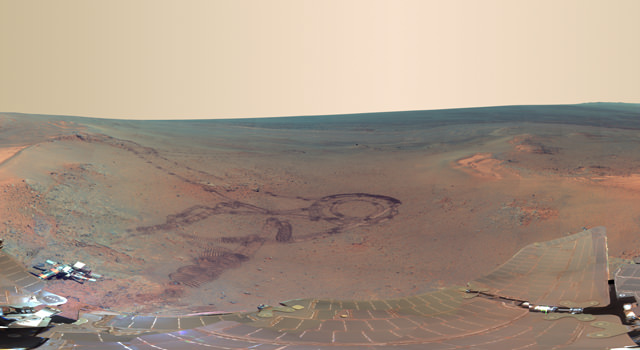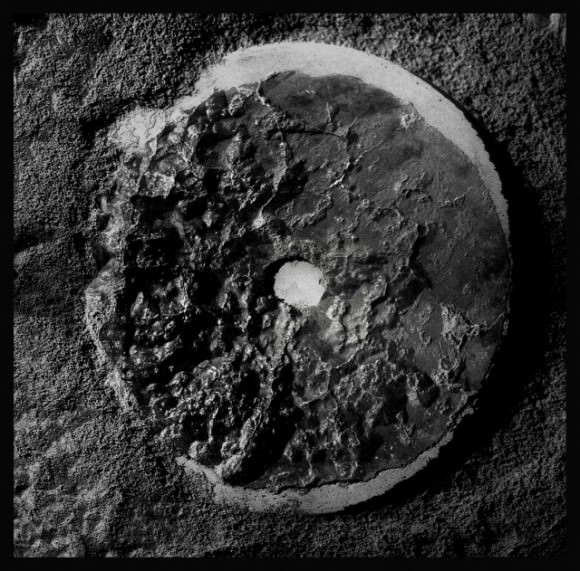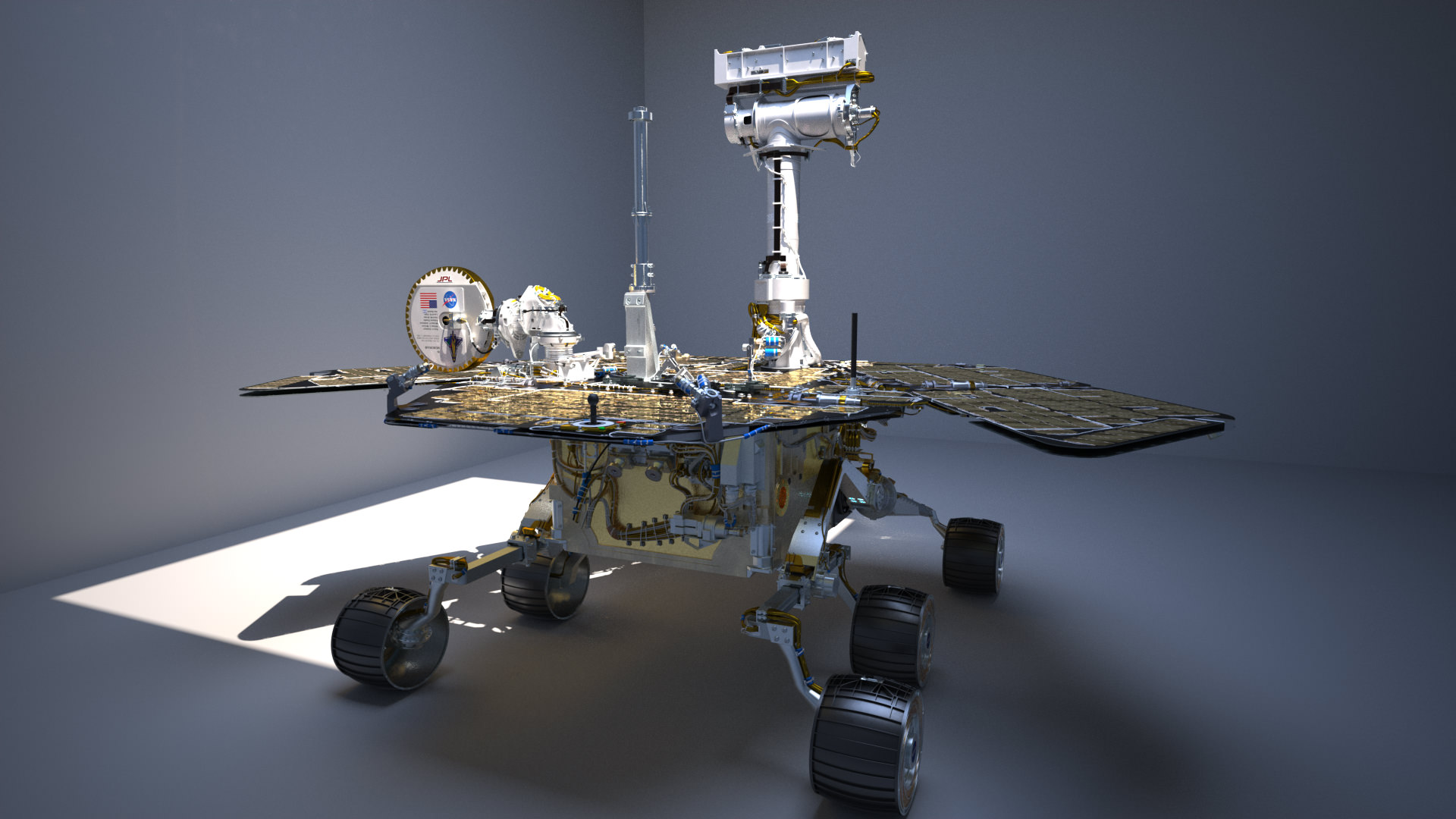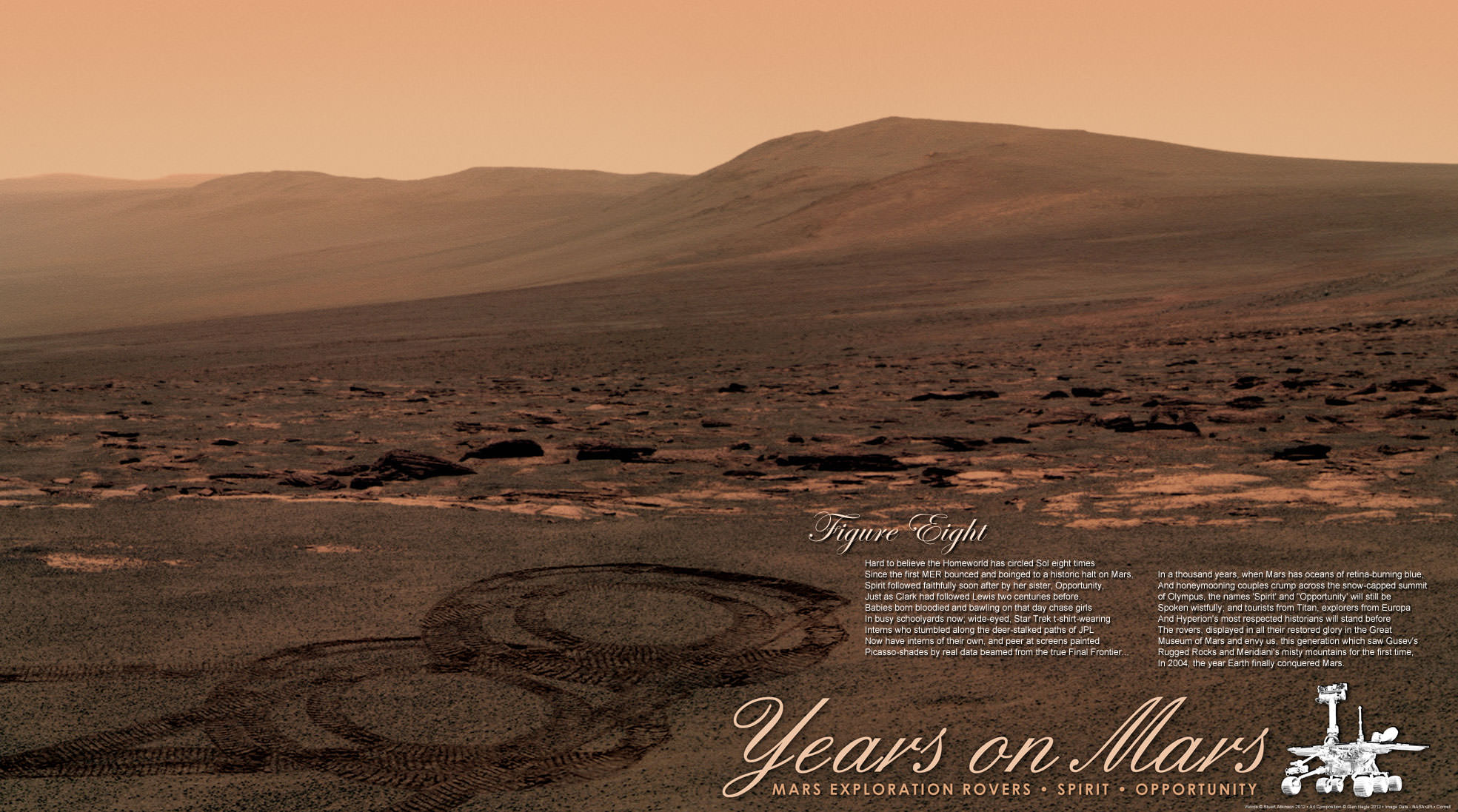In January 2004, NASA rovers Spirit and Opportunity (aka “Oppy”) landed in two completely different locations on Mars. Their missions were only designed to last 90 sols (approximately 90 Earth days), but they exceeded these parameters, and then some. While Spirit lasted until 2010, Opportunity lasted another astonishing eight years, when it sent its last transmission to Earth in June 2018. During its more than 14-year tenure on the Red Planet, not only did Opportunity gain celebrity status as being the longest serving planetary robotic explorer in history, but it helped reshape our understanding of Mars’ present and past. Now with the help of Amazon Studios and available on Amazon Video, we can re-live the adventure of this incredible rover with Good Night Oppy.
Continue reading ““Good Night Oppy” Beautifully Illustrates the Unbreakable Bond Between Humans and our Robotic Explorers”Opportunity Mars Rover Pushes Past 41 Kilometers Of Driving On Red Planet
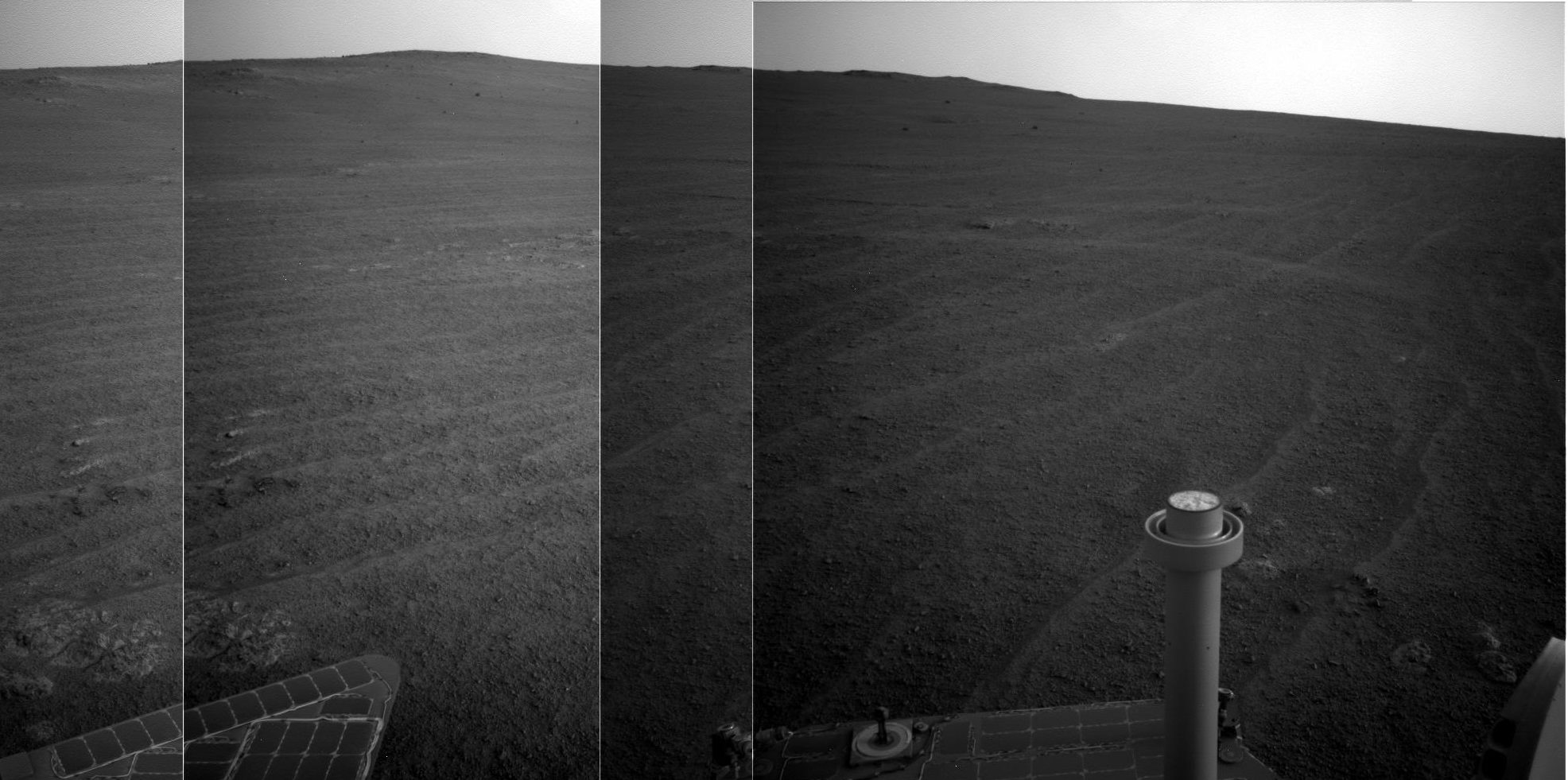
Opportunity is the rover that keeps on going and going. It recently broke an extraterrestrial driving record after 10 years of working on the Red Planet.
And even as the rover works through aging problems, the science team is still able to push it further — it just crested 41 kilometers (25.48 miles) on Sol Sol 3,836 (around Nov. 9)! Check out some recent pictures from the rover below.
The NASA machine is roaming the west edge of Endeavour Crater on its way to an area nicknamed “Marathon Valley”, which could contain clay minerals. Clays are considered a sign of water being in a region in the ancient past, which feeds into NASA’s ongoing search for habitable environments on Mars.
By the way, Opportunity is now just shy of a marathon’s worth of driving on Mars (which would be 26 miles, or 41.8 kilometers). In the meantime, we’ve collected some raw images from Opportunity to share. What new horizons will the plucky rover find next, as it draws close to its 11th anniversary on Mars in January?


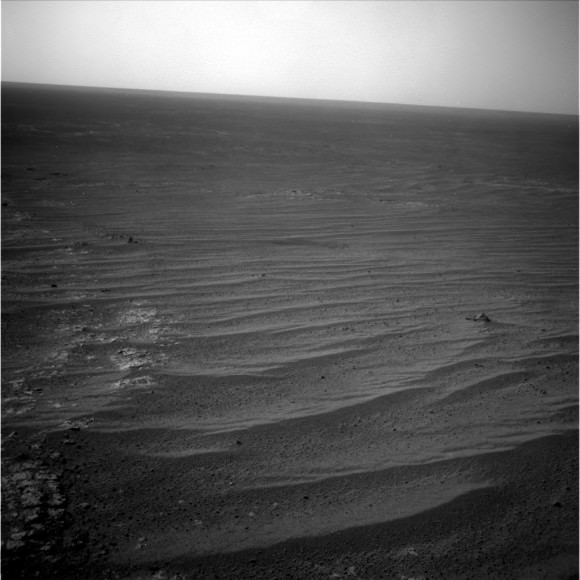
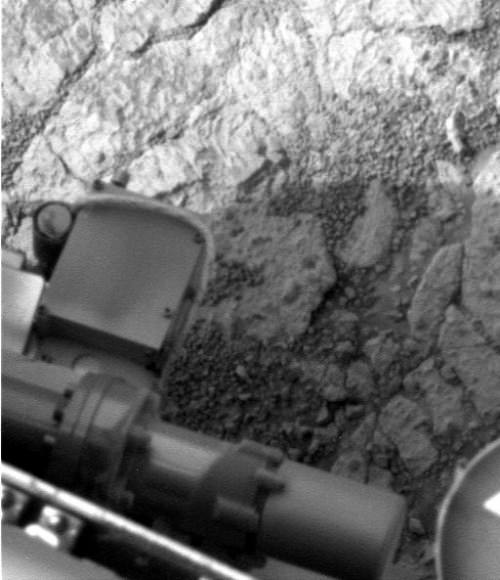
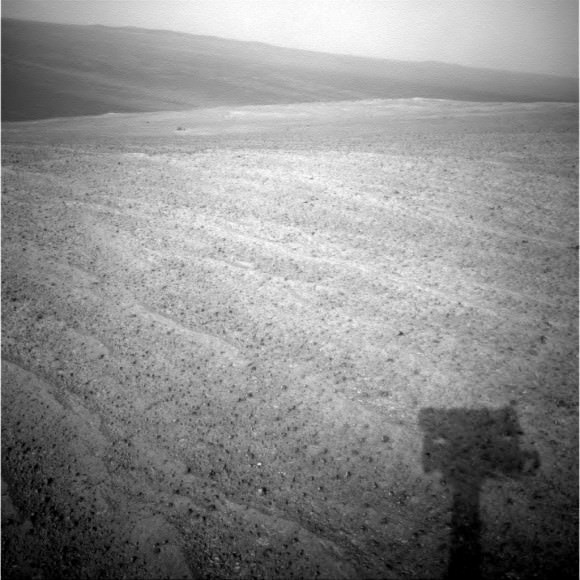
Mountains, Gandalf! Red Planet Pictures Show Mars In The Eyes Of The Rovers
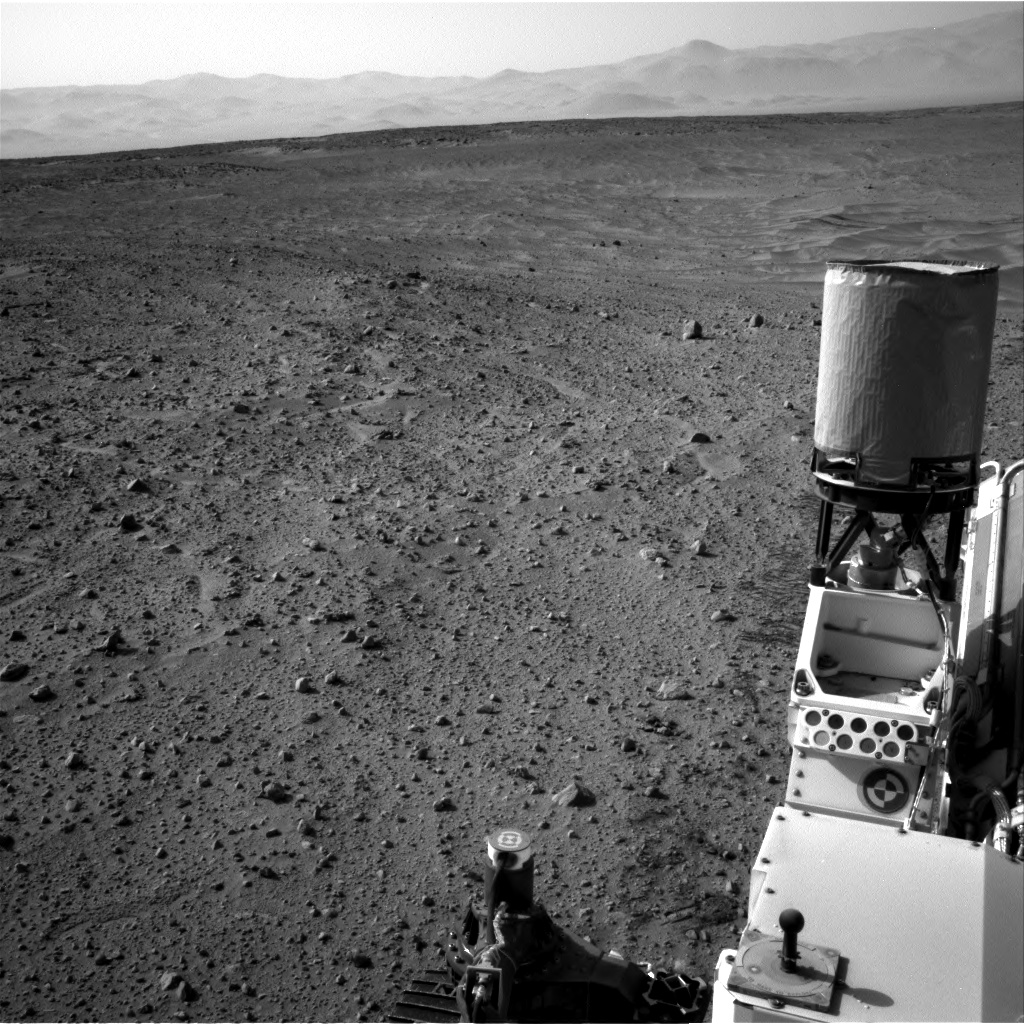
Fancy a little Mars in your daily life? You need go no further than the excellent raw image archive that NASA generously provides on its website, showing the view from the Opportunity and Curiosity rovers as they make their way on the surface.
Opportunity is rolling along in its eleventh year of operations, busily exploring the west rim of Endeavour Crater. Below the jump is a stunning stitch-together of some of its latest images from space tweep Stu Atkinson, who runs a lovely blog called Road to Endeavour about the rover’s adventures. NASA also has an official blog that was last updated July 1.
The Curiosity rover is in Gale Crater near the Martian equator, heading towards Mount Sharp as NASA picks paths that are the softest for its damaged wheels. Panorama maker Andrew Bodrov recently put together a new 360-degree view of Curiosity’s mastcam, which encompasses 137 images taken on Sol 673. You can see that below the jump as well.

Mars Panorama – Curiosity rover: Martian solar day 673 in out-of-this-world
Below are a couple of more raw views from the Curiosity rover taken on Sol 685.
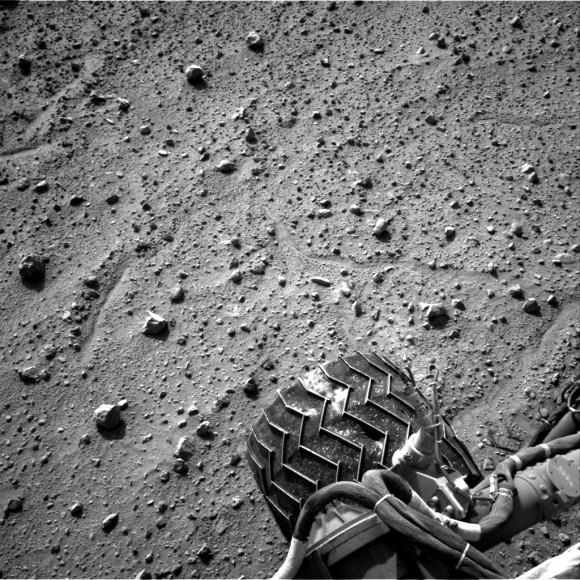
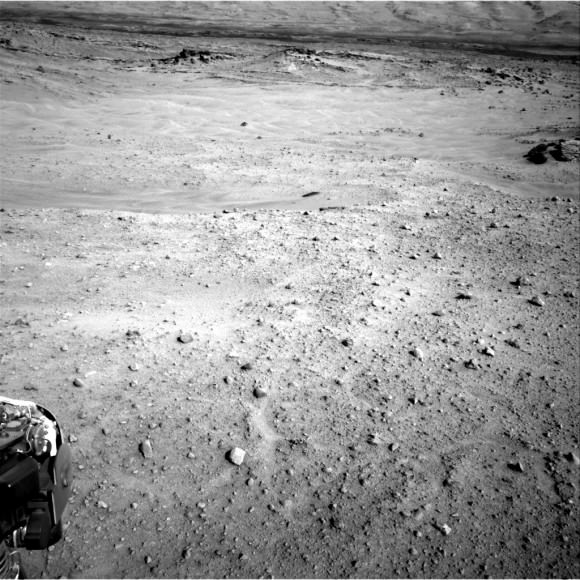
And across Mars, some views from Opportunity on Sol 3721 of the mission. The rover is facing the elimination of its funding in 2015, although in budget discussions from February NASA said it does have a route for it to get money (if Congress approves).
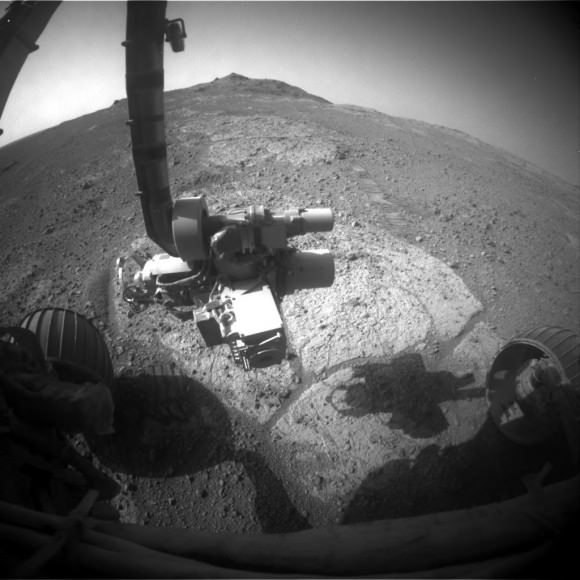
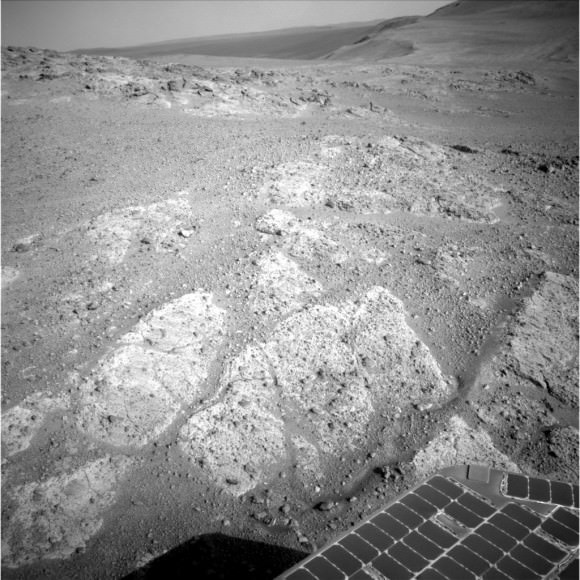

Some Ideas on Where the ‘Jelly Donut’ Rock on Mars Came from — and no, it’s not a mushroom
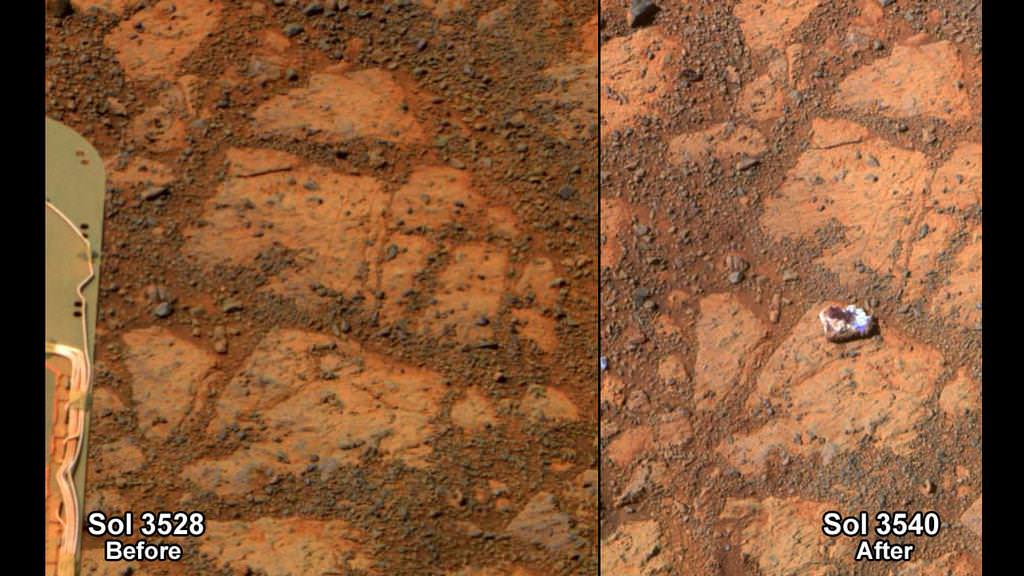
Hoo boy. Just mention the word “mystery” in conjunction with the planet Mars and all sorts of folks come out of the woodwork. Some start talking about silicon-based alien life forms or Mars-based reptiles or projectiles being tossed by little green men. The latest is that there’s an exotic mushroom on Mars, and this idea has sparked a lawsuit against NASA.
This all started when a strange rock suddenly appeared in photos from the Opportunity rover in a spot where photos taken just 12 sols (Mars days) earlier showed no rock. Mission principal investigator Steve Squyres talked about it during the recent 10-year anniversary celebration for the rover.
“It appeared,” Squyres said during the event. “It just plain appeared and we haven’t driven over that spot.”
They’ve named the rock “Pinnacle Island,” and Squyres and the Mars Exploration Rover team think the most likely scenario is that the rover actually dislodged the rock with its wheels and flicked it to a new spot as the rover was turning. “We had driven a meter or two away from here and somehow maybe one of the wheels managed spit it out of the ground,” Squyres said. “That’s the more likely theory.”
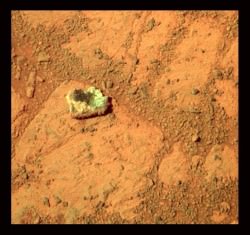
Another idea is that the rock is a piece of ejecta – a piece of rock which plunked down near the rover after being blasted out of the ground by a nearby meteoroid impact.
An idea favored by our readers here on Universe Today is that it possibly was a meteorite, dropping in from space and landing near the rover. Another thought is that since Opportunity is currently at Solander Point, a mountain of sorts, the rock may have rolled down to its new spot from a higher outcrop.
We checked in with Steve Squyres to see if there any new possibilities and he said the team thoughts on the rock’s appearance are the same as they were last week.
“We think the most likely hypothesis is that it was dislodged by the rover wheels from a location that may currently be obscured by the solar arrays,” he said via email.
Squyres described the rock as “white around the outside, in the middle there’s low spot that is dark red. It looks like a jelly donut,” and said it’s like nothing they’ve ever seen before on Mars.
Then things got weird. We received an email this week from neurologist and self-proclaimed astrobiologist Dr. Rhawn Joseph, of the Journal of Cosmology fame who we’ve previously written about.
He has filed a lawsuit in the US District Court Northern District of California claiming the white rock is biological in nature and is seeking an order forcing NASA, Administrator Charles Bolden, and others including Squyres to “examine a biological specimen on Mars” and that NASA is failing to investigate the rock thoroughly enough.
Joseph is petitioning the Federal Court for a writ of mandamus to “compel and order” NASA to “perform a public, scientific, and statutory duty which is to closely photograph and thoroughly scientifically examine and investigate a putative biological organism which was identified (and thus discovered) by Petitioner.”
From the lawsuit:
“Petitioner immediately recognized that bowl-shaped structure, hereafter referred to as Sol 3540,resembling a mushroom-like fungus, a composite organism consisting of colonies of lichen and cyanobacteria, and which on Earth is known as Apothecium.”
“When examined by Petitioner the same structure in miniature was clearly visible upon magnification and appears to have just germinated from spores.”
(Yeah, we’ve discussed previously the problems with zooming in on rocks on Mars – people start seeing crazy things).
For one thing, this is a rock. A rock. Squyres has said Pinnacle Island is very high in sulfur and magnesium, with twice as much manganese as anything else they’ve seen on Mars.
Second, the rover team is already throwing everything they’ve got at this rock.
“We are as we speak situated with the rover, with its instruments, making measurements on this rock. We’ve taken pictures of both the donut part and the jelly part,” Squyres said during the 10-year anniversary event.
Third, Joseph is not the “discoverer” of this rock. The MER team is and they’ve given full disclosure, talking frequently about the rock and posting all the images they’ve taken of the rock available for anyone to peruse.
So, where did this rock come from?
Of course, the folks from UnmannedSpaceflight.com have been discussing this rock before anyone else, since December when the images were first downloaded from the rover and put on NASA’s rover raw images website.
They’ve offered a few ideas, but this image from sol 3544 pointed out by “marsophile” on the forum might be the most compelling:
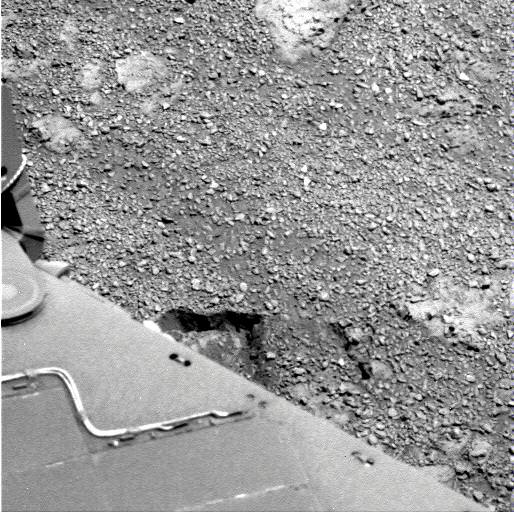
There appears to hole in the ground where a rock may have previously been.
Another set of images submitted by Universe Today reader Yuksel Kenaroglu highlights a possible location where the rock may have come from, but changes in lighting might just be making things look different in the two images:
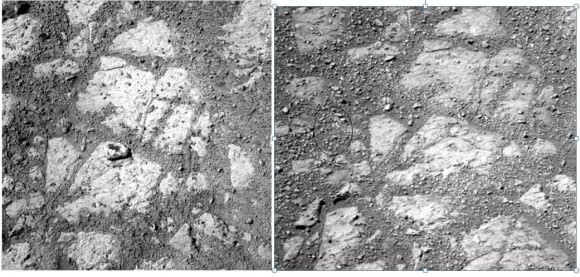
Joseph said he wants “A) 100 high resolution close-up infocus photos of the specimen identified in Sol 3540, at various angles, from all sides, and from above down into the “bowl” of the specimen, and under appropriate lighting conditions which minimize glare. B) Take a minimum of 24 microscopic in-focus images of the exterior, lip, walls, and interior of the specimen under appropriate lighting conditions. C) NASA, and the rover team must make public and supply Petitioner with all high resolution photos and images of that specimen as demanded in A and B.”
By the way, You can see all the images anytime here,
from the microscopic imager and all other eight cameras on the rover
Surely, Squyres and the MER team would like nothing better than to solve the mystery of how this rock appeared and just like the Mars flower, and the piece of plastic there’s very little likelihood that biology plays any role in this rock an how it suddenly appeared.
If you want to see Joseph’s lawsuit, PopSci has it online.
The Rock that Appeared Out of Nowhere on Mars
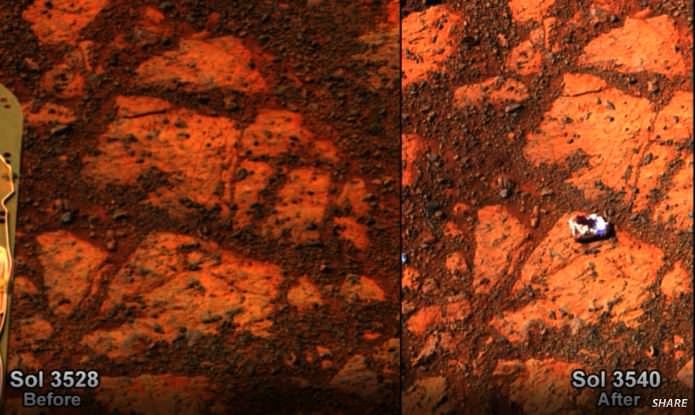
During last night’s celebration at the Jet Propulsion Laboratory of ten years of the Mars Exploration Rovers, mission principal investigator Steve Squyres shared several stories about the exploration and discoveries made by the rovers Spirit and Opportunity since they landed on Mars in 2004. An intriguing recent mystery is a strange rock that suddenly appeared in photos from the Opportunity rover in a spot where photos taken just 12 sols earlier showed no rock.
“One of the things I like to say is that Mars keeps throwing new things at us,” Squyres deadpanned.
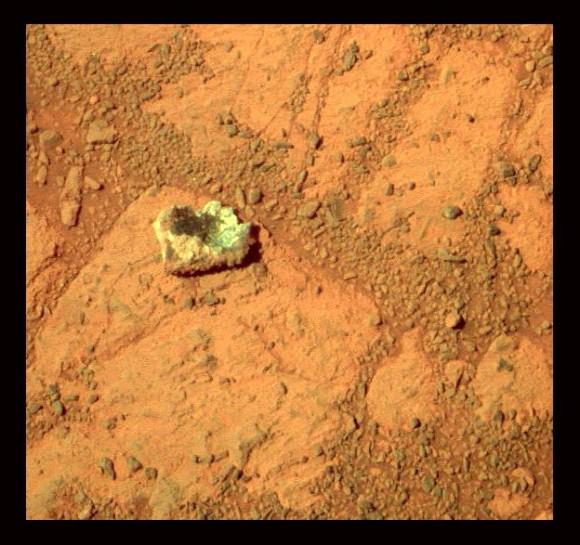
Squyres described the rock as “white around the outside, in the middle there’s low spot that is dark red. It looks like a jelly donut,” he said. “And it appeared. It just plain appeared and we haven’t driven over that spot.”
They’ve named it “Pinnacle Island,” and the team is contemplating a few ideas of why the rock mysteriously showed up.
“One theory is that we somehow flicked it with a wheel,” Squyres said. “We had driven a meter or two away from here and somehow maybe one of the wheels managed spit it out of the ground. That’s the more likely theory.”
The other?
“The other theory is that there might be a smoking hole in the ground nearby and this may be crater ejecta. But that one is less likely,” Squyres said.
Another idea suggested by others is that it may have tumbled down from a nearby rock outcrop.
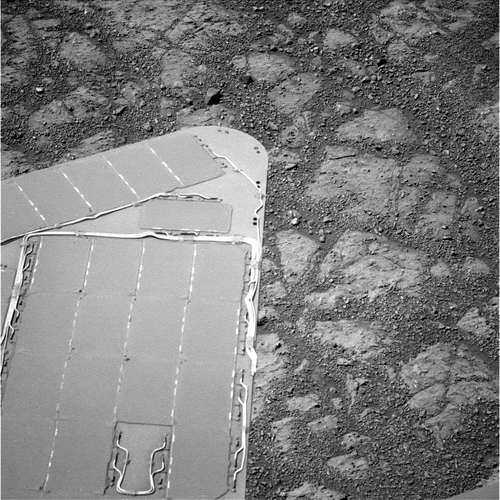
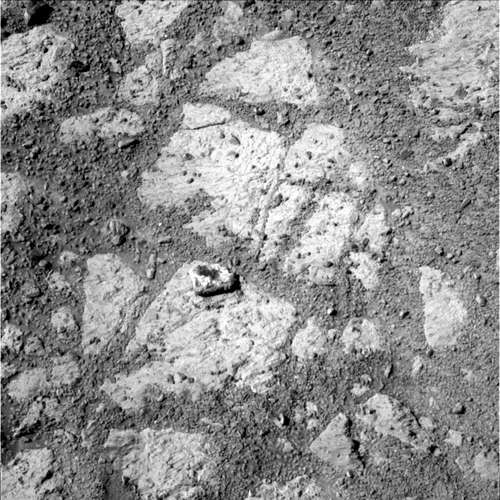
But as intriguing as the sudden appearance of the rock is what the team is finding out about it.
“We are as we speak situated with the rover, with its instruments, making measurements on this rock. We’ve taken pictures of both the donut part and the jelly part,” Squyres said. “The jelly part is like nothing we’ve seen before on Mars. It’s very high in sulfur and magnesium and it has twice as much manganese as anything we’ve seen before. I don’t know what any of this means. We’re completely confused, everybody on the team is arguing and fighting. We’re having a wonderful time!”
But that’s the beauty of this mission, Squyres said.
“I used to have this comforting notion that at some point, we could sit back and say ‘we did it, we’re finished, we’ve learned everything we could about this location.’ But Mars is not like that. It keeps throwing new things at us.”
“And what I’ve come to realize,” Squyres concluded, ” – and it was true when we lost Spirit and it will be true when we lose Opportunity — there will always be something tantalizing just beyond our reach that we just won’t get to. That’s just the nature of exploration, and I feel so very fortunate to have been part of this mission.”
You can watch the entire replay of the celebration below, and read a great look back at the past 10 years from Stuart Atkinson’s Road to Endeavour blog.
Opportunity Rover Glimpses Conditions Suitable for Life
Whitewater Lake is the large flat rock in the top half of the image. From left to right it is about 30 inches (0.8 meter) across. The dark blue nubby rock to the lower left is “Kirkwood,” which bears non-hematite spherules. Credit: NASA/JPL-Caltech/ Cornell Univ./Arizona State Univ.
Steve Squyres, Principal Investigator for the Mars Explorations Rovers, cracked open the equivalent of the Opportunity rover’s field geologist’s notebook to describe what he called “a delightful geological puzzle.”
“This is a work in progress,” Squyres said at the American Geophsical Union conference today, “But this is our first glimpse ever at conditions on ancient Mars that clearly show us a chemistry that would have been suitable for life.”
While both the MER rovers have found evidence of past water on Mars, all indications are that it would have been very acidic, with “battery-acid kind of numbers making it very challenging for life,” Squyres said.
Newly found clays that are sprinkled with two different kinds of previously unseen features point to a different type of water “that you could drink,” Sqyures added.
Orbital data from the Mars Reconnaissance Orbiter’s CRISM (Compact Reconnaissance Imaging Spectrometer for Mars) instrument originally led the MER team to Endeavour Crater, the huge crater where Opportunity is now traversing around the rim.
“It was discovered from CRISM that there were clay minerals there,” Squyres said, “and clays form in a watery environment, and only form under a neutral pH, water that is not acidic.”
The rover has found a region filled with light-toned rocks, such as the Whitewater Lake rock, above, around a small hill named “Matijevic Hill” in the “Cape York” segment of the rim of Endeavour Crater. Squyres described it as the “sweet spot” where clays are known to be present.
This map shows the route driven by NASA’s Mars Exploration Rover Opportunity during a reconnaissance circuit around an area of interest called “Matijevic Hill” on the rim of a large crater. Image credit: NASA/JPL-Caltech/University of Arizona
They have since driven the rover around Matijevic Hill to survey the clays, “which is what you would do if you were a geologist at a site, you’d walk the outcrop,” Squyres said. “We’ve got a good map of where the good, interesting stuff is at Matijevic Hill.”
Interspersed on the light-toned rocks are fine veins of even lighter material, which has never been seen before. Additionally, there are “fins” of darker rock sticking up in the region, and within the fins are dense concentrations of spherical little features, about 3 mm in size that are very similar to the hematite Martian “blueberries” that Opportunity has seen before. But when they looked at the chemical composition of these spheres, the science team found they weren’t blueberries, because they contained no iron, which is what hematite is made from.
“It’s something totally different, and I’ve started calling them ‘newberries’,” said Squyres.
Small spherical objects fill the field in this mosaic combining four images from the Microscopic Imager on NASA’s Mars Exploration Rover Opportunity. Image credit: NASA/JPL-Caltech/Cornell Univ./ USGS/Modesto Junior College
It is difficult for the rover to determine the chemical make-up of the newberries and the light-colored veins because they are such small features, the rover can’t focus merely on those features. But Squyres and team have come up with a to-do list to try and figure out the mystery of the clays and newberries:
Task one is to understand the Whitewater Lake rock better and look at the rock’s sediments, to understand the layers in the rock: were the layers laid down by water, impact or another process?
The second task is to figure out what the newberries made of. They will have to observe regions that have different concentrations of the spherules to eke out what minerals are and aren’t part of the newberries.
Task three is to find a “contact place” where the light-toned clay rocks like Whitewater are touching the breccias – the broken and fused rock born of the impact that created the crater – that is present all around the rim of Endeavour. They haven’t yet found a place where the two are together.
Task four is to figure out what the fine veins are in the clay rocks.
The tasks are intertwined, Squyres said. “Figuring out the newberries will be important for figuring out the how these clays were laid down. So the stories aren’t independent, they are woven together and we still have homework to do,” he said.
But the team will have to work fast.
Opportunity image of light, flat rocks containing clay and mysterious darker rocks jutting through them. NASA/JPL-Caltech/ Cornell Univ./Arizona State Univ
They have about 6 months before winter sets in again in Meridiani Planum on Mars.
“We’ll soon start doing some serious winter planning,” said Diana Blaney, Deputy Project Scientist. When asked about the potential for Oppy to make it through another winter, Blaney said it all depends on the amount of dust build-up on the solar panels and how much power can be generated. “We don’t have any reason not to expect to survive, but it is a dynamic situation, and are looking ahead to find potential wintering sites,” that have beneficial tilt for the rover to absorb as much sunlight as possible.
The last winter the Opportunity rover endured was the first time the rover had to remain stationary due to power concerns because of dust accumulation on the solar arrays.
“We’re nine years into a 90 day mission,” Squyres said, “and every day is a gift at this point and we’re just going to keep pushing ourselves and the rover.”
A 3-D mosaic of the Cape York region where Opportunity is now working. Credit: NASA/JPL-Caltech/ Cornell Univ./Arizona State Univ
For additional information, see this NASA press release.
Latest Panoramic View from Mars Rover
What’s a Mars rover to do when there’s not enough power to rove? Take pictures. LOTS of pictures! This wonderful new panoramic view of the Opportunity rover’s stopping place this past Mars winter, Greeley Haven, is composed of 817 images taken between Dec. 21, 2011, and May 8, 2012. It shows fresh rover tracks and the rim of an ancient impact crater, Endeavour, which awaits more explorations from Opportunity. You’ll want to click and see a bigger version of it here.
But to get the full effect, check out this great interactive sphere of the panorama put together by John O’Connor of the NASATech website!
The images were taken with the color camera mounted on the mast of Oppy, providing a sense of sitting on top of the rover and taking in the view. This is actually a false color image, which emphasizes the difference between the materials.
“The view provides rich geologic context for the detailed chemical and mineral work that the team did at Greeley Haven over the rover’s fifth Martian winter, as well as a spectacularly detailed view of the largest impact crater that we’ve driven to yet with either rover over the course of the mission,” said Jim Bell of Arizona State University, Tempe, Pancam lead scientist.
Opportunity has recently reached a milestone: On July 2, Opportunity reached its 3,000th Martian day, or Sol. You can read a great write-up of the accomplishment at the Road to Endeavour blog by Stu Atkinson, which includes interviews of rover drivers Scott Maxwell and Paolo Bellutta.
Stu also compiled this mosaic close-up of a RAT (Rock Abrasion Tool) hole drilled by Oppy into a rock called “Grasburg.”
Opportunity has recently started to take short drives coming off the long Martian winter, and the team notes in the latest update that the rover has been benefiting from solar array dust cleaning events, which increase the daily energy production: as of Sol 3001 (July 3, 2012), the solar array energy production was 577 watt-hours. That’s great news for future drives and the longevity of the long-lived rover, which has been on Mars since 2004. Truly, Oppy is the Energizer Bunny of rovers!
Lead image caption: This full-circle scene combines 817 images taken by the panoramic camera (Pancam) on NASA’s Mars Exploration Rover Opportunity. It shows the terrain that surrounded the rover while it was stationary for four months of work during its most recent Martian winter. Image Credit: NASA/JPL-Caltech/Cornell/Arizona State Univ.
Second image caption: A close-up look at a hole drilled by Opportunity’s RAT (Rock Abrasion Tool). Mosaic of 4 microscopic imager photos by Stu Atkinson.
Source: JPL
Incredible Digital Re-creations of the Mars Rovers
[/caption]
Want to see the Mars Exploration Rovers in incredible, intricate detail – without having to travel to the Red Planet to inspect them in person? Design wizard Nick Sotiriadis from Greece has spent five years working on what he calls a once-in-a-lifetime project creating high resolution 3-D renders of the Mars rovers with attention to detail precise at the scale of millimeters. Even NASA doesn’t have anything this detailed for reference, so Sotiriadis basically built these visual representations of the rovers with 3-D computer graphics.
“After 3 computer upgrades, a lot of sleepless nights, a lot of frustration and hundreds cups of coffee, the project is about to be finished,” Sotiriadis said.
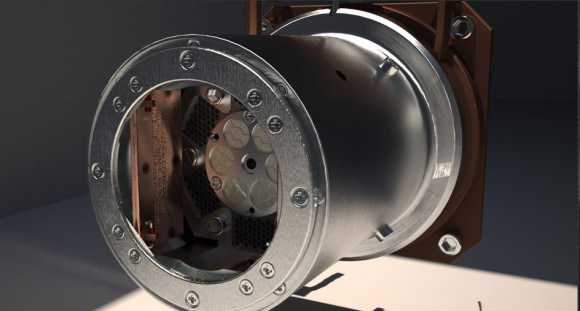
He’s still putting the final touches on his project, but it’s been a labor of love because of his interest in space and technology, as well as wanting to refine his computer graphic skills.
“It has been really challenging and has helped me increase my experience in the 3-D field,” Sotiriadis told Universe Today. “However, it was a lot tougher than I thought it was going to be. I didn’t have any good references and I spent literally hundreds of hours studying reference photos online. Later on I posted on the Unmanned Spaceflight Forum and people’s support and excitement in the forum is what has kept me going.”
What he is creating are 2-D images with 3D photorealistic effects. Sotiriadis has ‘built’ just the Spirit rover, but said the differences in the two rovers would be visible only to professionals and hardcore fans.
The project is still a work-in-progress, since he is still texturizing and rendering his visualizations, but he has posted several views on his website.
“Once I am finally done the whole page will be replaced with full-high resolution renders of the Mars rovers,” he said.
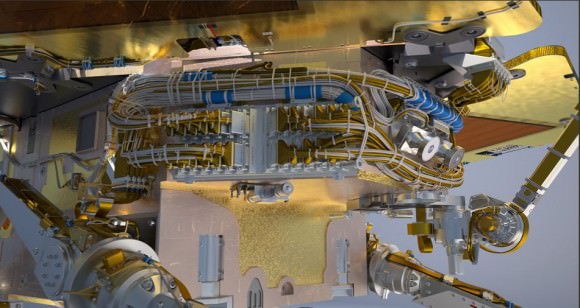
When the project is complete, viewers will be able to see the rovers in any view. “Since it’s created in 3-D, you can see any angle you want, but it takes several tens of hours of computer processing for the final picture to be created.”
I asked Sotiriadis if since these are super-high resolution re-creations of the rovers, if you printed them out would they basically be life sized — or bigger?
“Since the model is done at that level of detail I can create a picture of any resolution -no matter how high – so I guess it could be created so to be printed in life-size specs and still have all the details,” he said. “However the rendering process – that is the process of creating the photorealism out of my 3-D model – is very power hungry and time consuming. I guess render computer farms would have to be used to make it.”
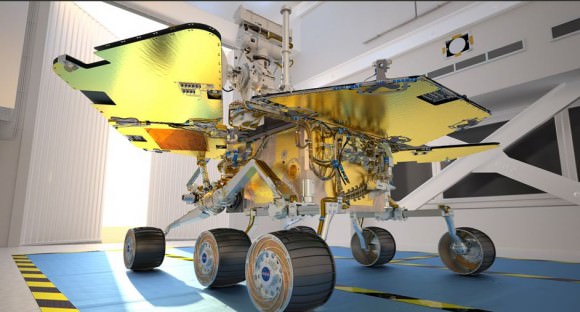
Interestingly, he started this project because of the movie, “Transformers.”
“Ever since I can remember, I loved Transformers,” Sotiriadis said via email. “I played a lot with Transformers when I was a kid. When the movie by Michael Bay was announced, they released a teaser trailer that showed a rover finding robotic life on the Moon. I wanted to do something that was similar to the computer graphics in the movie, so I thought it would be a great idea to model the Mars rovers.”
The five years of work have not come without frustration. “I have redone many things countless times,” Sotiriadis said. “I accidentally deleted surfaces it took tens of hours to re-create, I upgraded my computer several times in order to just open the file because of its great size. The effort was a lot harder than I could ever put to words.”
But it is really awesome.
Check out Sotiriadis’ Mars Rover Project website to see his high resolution renderings of the Mars rovers.
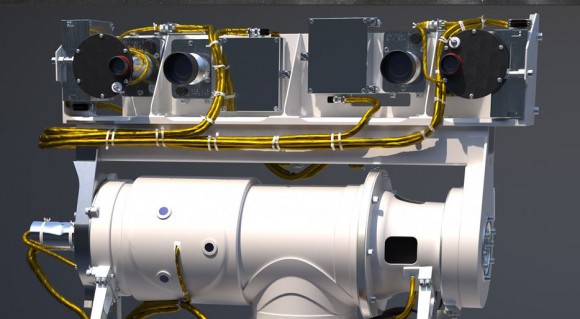
8 Years on Mars: Downloadable Rover Poster
8 years ago today, January 24, the Opportunity rover landed on Mars. In what has become a tradition, Stu Atkinson and Astro0 from Unmanned Spaceflight have teamed up to create a poster and poem combo to celebrate the occasion. While we fondly remember Spirit’s now-finished journey, the poster features scenes from Opportunity’s view of the ‘Tribulation’ hill and the hills of the crater rim beyond. And no, Oppy didn’t actually spin out in double donuts on Mars to create the ‘figure 8.’
“For a little effect, we’ve added the ‘figure 8’ in the form of the rovers own tracks on Mars,” Astro0 said. “While they may have dreamed of doing it, I’m sure no rover driver would ever be tempted to leave such a mark on Mars for real. So it was only right and proper that I and Photoshop do it for them.”
Click on the image above for a larger version or visit the Astro0 website for higher resolution versions that you can download to print out as a poster or use for your computer wallpaper. Stu’s poem — which both waxes wistful about the year of the MER rovers landing and prognosticates Mars’ future — is written out below:
8 Years on Mars
Hard to believe the Homeworld has circled Sol eight times
Since the first MER bounced and boinged to a historic halt on Mars,
Spirit followed faithfully soon after by her sister, Opportunity,
Just as Clark had followed Lewis two centuries before.
Babies born bloodied and bawling on the day chase girls
In busy schoolyards now; wide-eyed, Star Trek t-shirt wearing
Interns who stumbled along the deer-stalked paths of JPL
Now have interns of their own, and peer at screens painted
Picasso-shades by read date beamed from the true Final Frontier…In a thousand years, when Mars has oceans of retina-burning blue,
And honeymooning couples crump across the snow-capped summit
Of Olympus, the names ‘Spirit’ and ‘Opportunity’ will still be
Spoken wistfully; and tourists from Titan, explorers from Europa
And Hyperion’s most respected historians will stand before
The rovers, displayed in all their restored gory in the Great
Museum of Mars and envy us, this generation which saw Gusev’s
Rugged Rocks and Meridiani’s misty mountains for the first time,
In 2004, the year Earth finally conquered Mars.By Stu Atkinson
To see maps of where the rovers are now, see the Mars Rover website.
See more images and musings on space at the Astro0 website, and follow along Oppy’s journey at the Stu’s Road to Endeavour site. For more skillfully mastered images from the MER mission and more, visit Unmanned Spaceflight.
Timelapse: The Spirit Rover’s Entire Journey on Mars
In just under 3 minutes, this timelapse video uses 3,418 different images taken by Spirit’s front-right Hazcam to give an overview of her mission — from waking up and driving off the lander back in January, 2004 to studying countless rocks, climbing up (and down) Husband Hill, studying more rocks, trekking across Gusev Crater, stirring up some interesting light-colored soil, to ultimately getting stuck not being able to get out. This time-lapse covers 7.25 km (4.8 miles) of driving over the course of 5 years, 3 months, 27 days, all played back at 24 frames per second.
Via @SpaceFuture


